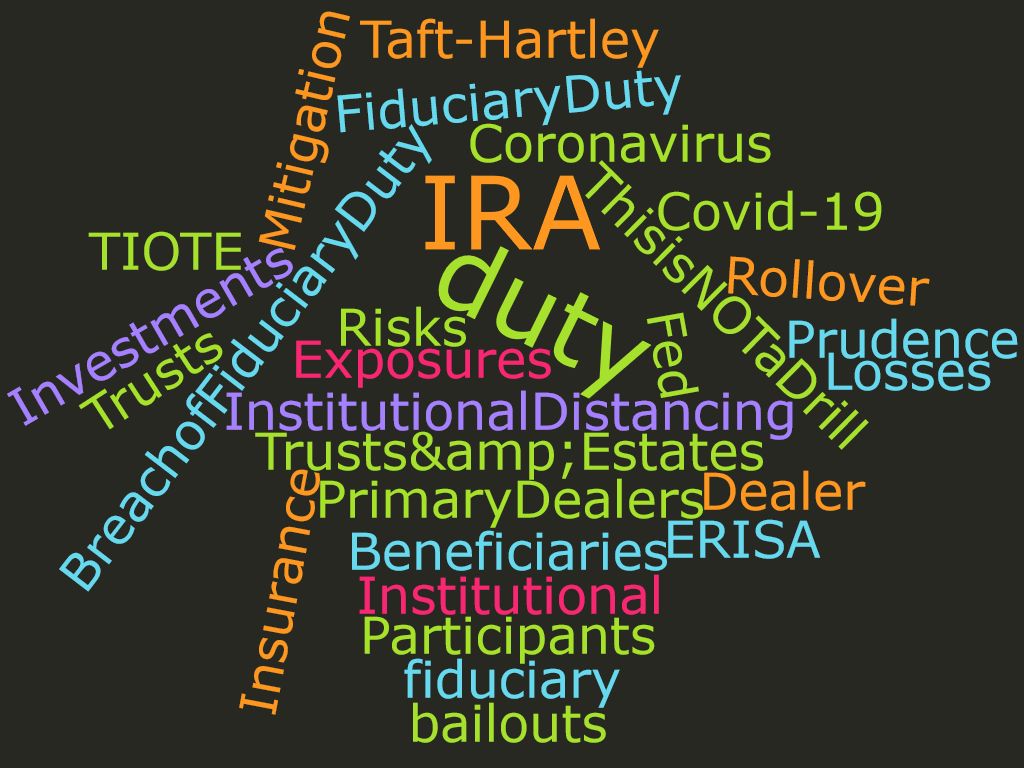 Would it be TMI (too much information) or perhaps since 2014 is just around the corner, should the dollar amount of fees, expenses and commissions be printed on page 1 of investors’ trust or investment aka brokerage account statements?
Would it be TMI (too much information) or perhaps since 2014 is just around the corner, should the dollar amount of fees, expenses and commissions be printed on page 1 of investors’ trust or investment aka brokerage account statements?
In 2013 markets reached record highs, however, for trustees, record highs may result in record high fees, commissions and expenses charged to trust accounts. The questions is always, what are the actual costs against the benefit and risks. So how to navigate higher fees due to a higher stock market?
Also recently major brokerage firms announced changes to 2014 compensation plans for advisors. The question here is are the changes also aligned with the interests of fiduciary trust accounts too?
What trustees need to know
All major brokerage firms seem to penalize (reduce compensation for) low producers, especially long time, industry veterans. And are upping incentives for advisers who increase revenue (from clients’ accounts) over 10%. Whether or not an investor’s account performs well, matches the market averages or loses money generally does not factor into an adviser’s compensation.
For advisers who seek to hit the new incentives, where will that revenue come from? In large measure, trust accounts and other fiduciary accounts, because they tend to have larger asset values, often in the millions of dollars. And if it comes from your account are you for example receiving 5% or 10% more value?
Checklist of Questions for Trustees
Is payment of any amount for advice for any broker-managed accounts justified by investment gains, risk reduction and or overall performance? How and who performs the evaluation?
If your trust, custodial (minors, IRA, IRA rollover, educational, etc.), fiduciary account did worse than market averages what were the causes? Was it the broker’s advice that was good, not so good, untimely or perhaps your decision to disregard that advice? Trustees need be very careful here.
Is your trust account being targeted for the broker’s revenue enhancement? How do you respond to your broker’s product, planning, insurance or alternative investment pushes? Ask your broker about implementation deficits.
Has the brokerage firm informed you of theirs’ and advisers’ (brokers’) 2013 and 2014 compensation plans and changes thereto? Have you discussed or evaluated costs, risks and benefits to your specific trust or fiduciary account?
Common complaints which appear in FINRA arbitration claims, Trust litigation and other matters for violations of breach of fiduciary duty are variations on the typical lines from the old Perry Mason television show, “where were you on the night of the 17th, who were you with and what were you doing?” In trust litigation, those questions loosely translate into “Where are your assets, how are they performing and what are you paying for that performance?”
One reader recently commented at the NY Times this solution:
No more commissions on Wall Street. Everyone is on salary. This gets rid of the fast talkers and people that only care about themselves. Get rid of all commissions and you get rid of the major point of today’s Wall Street: skimming. The more financial products they create the more they can skim off the wealth of America to pay for yachts and the Hamptons. It’s our money, why should these non/false bankers use our money for their over-consumption.
He continued, and of course, it’s just one man’s opinion, however the dollar amount of fees, expenses and commissions often remain buried in small print. I would add the word “fees.” as many accounts don’t pay commissions anymore, they are called “fees” and go by a variety of different names. It’s time to look at fees for asset – based compensation and the more insidious, leveraged or derivatives – based compensation and bonus plans, loose regulatory and accomodative accounting practices squarely in the eye, for the potential harm they have and may cause (not limited) to investors, trusts, fiduciary accounts and beneficiaries.
The days of “for all these services, we only charge a 1% fee” could be supplemented with “and that 1% fee is $61,000 dollars charged to your trust account in 2013”. When dollar amounts are shown investors and trustees get it, and wouldn’t have to dig deep into their statements to figure it out. For nearly three decades, the moment an account is charged a fee or commission, the bank or stock brokerage firms’ computers already show it internally as revenue to the broker, branch office or adviser. Banks, brokerage firms, trust companies, stock brokers, bankers and advisers all get paid in dollars, it’s time for trustees to be quoted and shown fees in dollars on the statements as well as percentages. Update February 2014. The SEC (Securities Exchange Commission) recently issued a notice to investors regarding fees, expenses, commissions, markups, surrender charges, account and maintenance fees, etc
FACE AUDIT™
Fiduciary Account Commission Expense Audit may help trustees, trust beneficiaries or litigators get the complete picture of investment expenses, fees and commissions in Family or Charitable Trusts, Pension and retirement plans, IRA and IRA Rollovers, and Non-profit, Foundation and Endowment investment portfolios.
*Note a FACE Audit™ can be informative for any type of brokerage investment account.
For more info info@fiduciaryexpert.com or (310) 943-6509
Copyright Chris McConnell & Associates 2013 All rights reserved


